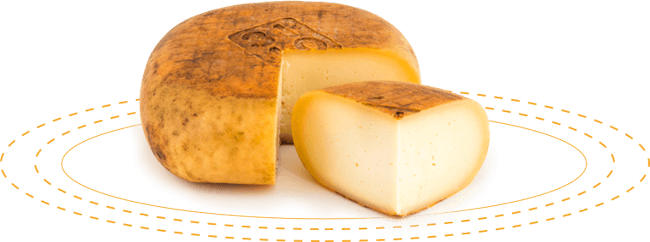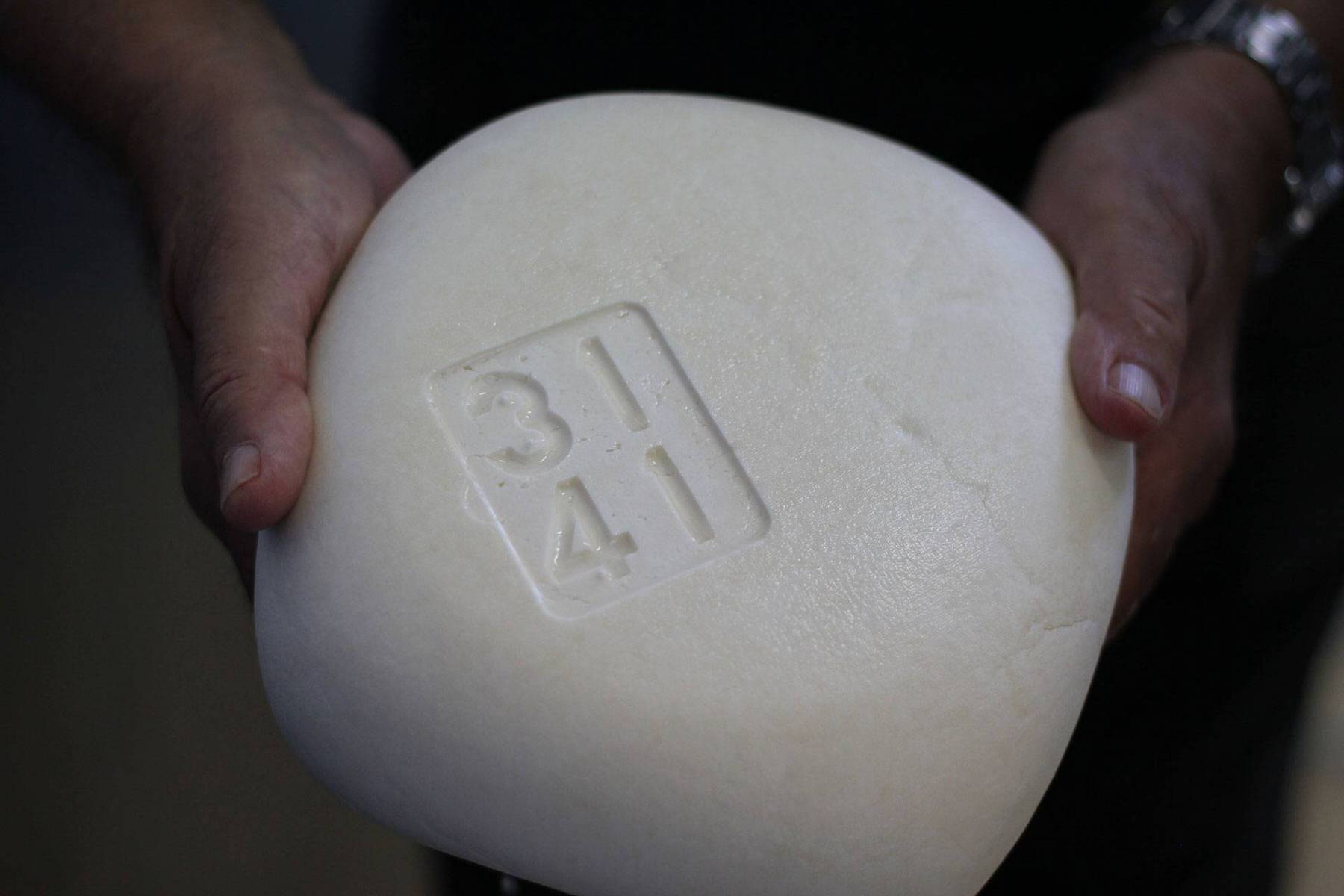
First a cow volunteers to be milked.
We fill a special cask with the freshl y drawn milk and k eep it at the same temperature as the cow’s udder. Then coagulation begins. Coagulation, or curdling, involves nothing more than adding rennet to the milk and bringing it to a temperature of between 32 and 33 degrees. As the milk is curdling, we stir and break it into pieces the size of chickpeas.
When the curdled milk has formed into a paste, the master craftsman uses cheesecloth, a gauzelike fabric, to separate out the desired quantities. We add our farm’s identification number and the week and year of pr oduction. With an expert technique, the four corners of the cloth are joined together with the folds sharpl y creased. The cheese is then gentl y placed on a table where the whey is free to drip out. Using a string of cord, we roll the corners of the cheesecloth up and press down on the cheese to squeeze out the whey.
When the cheese has been thoroughly tied and squeezed, we place it in a mechanical press to continue removing the whey . This process lasts from 2 to 8 hours.

Our master craftsmen determine when the cheese is ready for aging and drying. That process begins in a ventilated chamber where the cheese is exposed to fresh air and surface molds can develop. The cheese is then stored in an aging cellar, where it remains for a predetermined amount of time according to its variety.